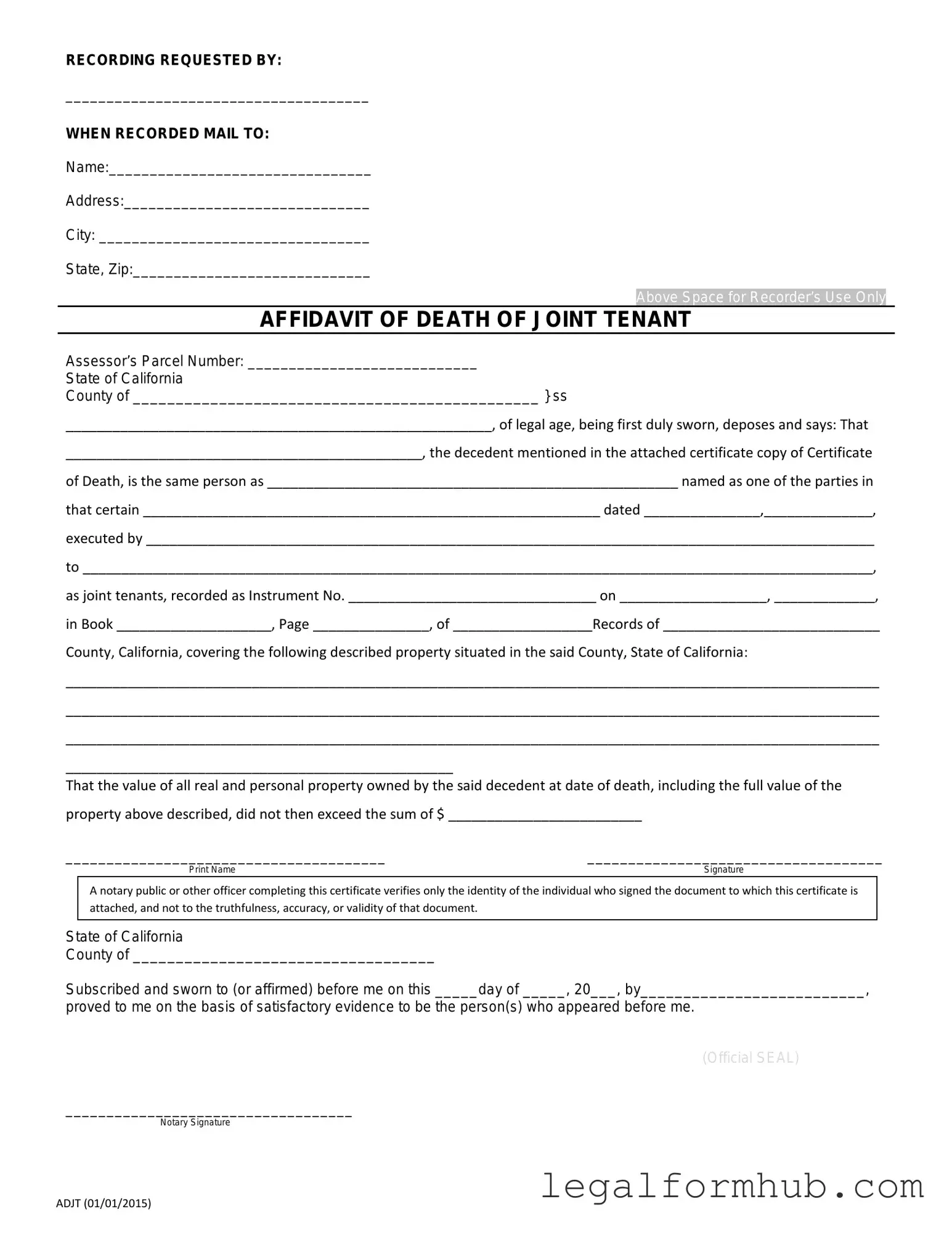The California Death of a Joint Tenant Affidavit is similar to the Affidavit of Heirship. Both documents serve to clarify the transfer of property ownership after someone's death. The Affidavit of Heirship is often used when the deceased did not leave a will. It helps establish who the rightful heirs are, ensuring that property is passed down correctly. Like the Death of a Joint Tenant Affidavit, this document is typically filed with the county recorder to update property records.
Another similar document is the Grant Deed. A Grant Deed is used to transfer property ownership from one party to another. When a joint tenant passes away, the surviving tenant may use a Grant Deed to formally transfer the deceased's share of the property into their name. Both forms help establish clear ownership, but the Grant Deed is more focused on the actual transfer process rather than just confirming the death of a joint tenant.
The Transfer on Death Deed (TOD) also shares similarities with the California Death of a Joint Tenant Affidavit. A TOD allows a property owner to designate beneficiaries who will automatically receive the property upon their death. This document helps avoid probate, much like how the Death of a Joint Tenant Affidavit simplifies the transfer of property without going through lengthy legal processes. Both documents streamline the transfer of property upon death.
The California Affidavit of Death form allows individuals to formally declare the passing of a person. This document is often used when the deceased held property or assets in a joint tenancy arrangement, similar to the California Death of a Joint Tenant Affidavit. Both forms serve the purpose of notifying interested parties and facilitating the transfer of property without going through probate. This affidavit can be beneficial for heirs who want to claim real estate or accounts held jointly with the deceased. Additionally, for employers and employees navigating these processes, utilizing resources like Fill PDF Forms can streamline the necessary documentation.
The Affidavit of Death is another related document. This affidavit is used to declare that a specific individual has passed away. While the Death of a Joint Tenant Affidavit focuses on joint tenancy properties, the Affidavit of Death can be used in various situations, including settling estates. Both documents serve as official statements about the death, but their purposes differ slightly based on property ownership and transfer needs.
The Last Will and Testament is also relevant in this context. A will outlines how a person's assets should be distributed after they die. If a property is held in joint tenancy, the Death of a Joint Tenant Affidavit may be used instead of a will to transfer ownership directly to the surviving tenant. While a will can be more comprehensive, the Death of a Joint Tenant Affidavit provides a quicker route for transferring property held in joint tenancy.
Finally, the Community Property Agreement can be compared to the California Death of a Joint Tenant Affidavit. In community property states like California, spouses can own property jointly. When one spouse dies, the surviving spouse may use a Death of a Joint Tenant Affidavit to claim the deceased's share. Both documents help clarify ownership and rights, but the Community Property Agreement specifically addresses the ownership structure between spouses.
